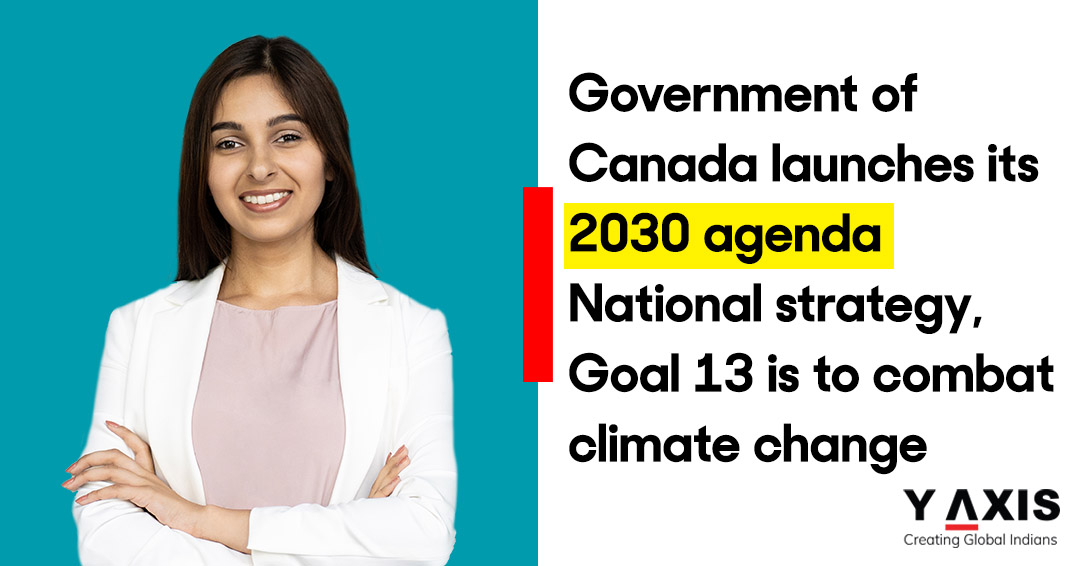Posted on April 19 2021
Government of Canada launches its 2030 agenda National strategy, Goal 13 is to combat climate change
By , Editor
Updated April 28 2025
The Government of Canada launched its 2030 Agenda National Strategy, “Moving Forward Together,” which aligns with the United Nations' 2030 Agenda for Sustainable Development, adopted in 2015. This strategy aims to advance 17 Sustainable Development Goals (SDGs) through a whole-of-society approach, fostering collaboration among federal governments, Non-Governmental Organizations (NGOs), Indigenous communities, and the private sector to build a more resilient, inclusive, and sustainable Canada.
Goal 13 focuses explicitly on taking urgent action to combat climate change and its impacts, a significant priority given the increasing frequency and intensity of climate-related hazards. Affordable, scalable options and a slew of policies to minimize pollution, respond to climate change, and boost resilience are all available to help countries leapfrog to cleaner, more sustainable economies focused on renewable energy and energy efficiency. Humans are responsible for decreasing greenhouse gas emissions and planning low-emission development pathways. Cities consume 78 percent of the world’s energy sources and generate more than 70 percent of energy-related carbon dioxide, primarily through energy production, transportation based on fossil fuels, and industry and biomass consumption.
Role of the government
Canada is determined to bring the U.N SDGs closer to reality by working towards reducing greenhouse gas emissions by 30% by 2030 and preparing Canadians to face the challenges of climate change. Apart from this, the government can play a role in:
- Developing inclusive approaches to achieve political, economic, environmental, and societal goals related to climate change mitigation and adaptation.
- Developing comprehensive low-emission development strategies, such as plans for carbon-neutral transportation systems, innovative grid development, and green growth.
- Measuring and monitoring progress and impact of community-level greenhouse gas emission inventories using the most up-to-date criteria.
- Amending building codes and zoning bylaws to adopt regulations regulating the design of buildings and facilities that are more resilient to climate change threats.
- Developing innovative financing tools to help mobilize investments to address climate risks resulting from a lack of basic infrastructure and environmental amenities for all, especially the poorest urban residents.
Multiple objectives
The Canadian government has a list of objectives it seeks to achieve by 2030; this includes:
- Strengthen resilience and adaptive capacity to all countries' climate-related hazards and natural disasters.
- Integrate climate change measures into national policies, strategies, and planning.
- Improve education, awareness-raising, and human and institutional capacity on climate change mitigation, adaptation, impact reduction, and early warning.
- Implement the commitment undertaken by developed-country parties to the United Nations Framework Convention on Climate Change.
- Promote mechanisms for raising capacity for effective climate change-related planning and management in least-developed countries.
- Canada’s determination to provide concrete measures to combat climate change is a testimony to its desire to meet the U.N.’s agenda, which will ensure a better quality of life for everyone living in Canada, including immigrants.
Tags:
Canada Immigration
Share
Options for you by Y-Axis
Get it on your mobile
Get News alerts
Contact Y-Axis

